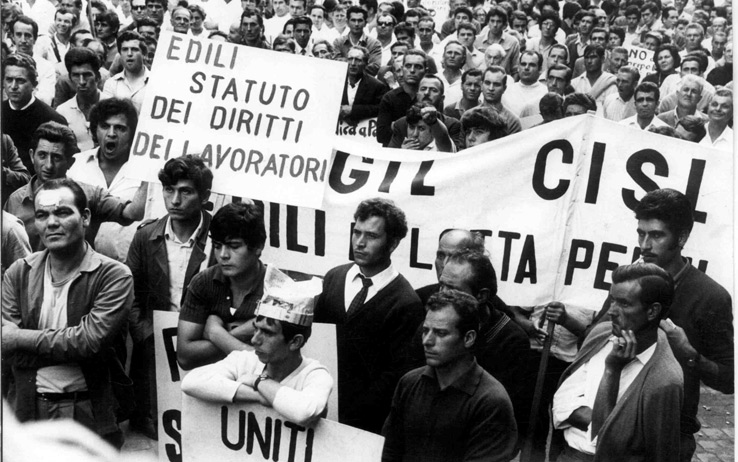_____________________________________________________________________________________________________________
ITALIAN GROUP: Federica Bucci, Sara Sinisi, Vincenzo Schiavone
MIGRATIONS IN ITALY:
Waves of immigration are part of the history. Especially between 1960 and 1975 we can find emigration waves in Turin and in Germany.
During the first post-war period, Turin was the center of a migratory flow, that started in the 50’s, reached its peak in the period of the “economic miracle” and lasted until the 70’s. Immigrants arrived mainly from the South of Italy. They were women and men coming from the poorest areas, so they looked for work in Turin because it was a developing town. It was born a nursery rhyme: “ Turin,Turin, Turin beautiful town, one eat, one drink and one well is!” Between 1958 and 1963, 1.300.000 southerners left their homes to go to the North of Italy. Between them, 800.000 went to Turin. So there was an increase in population. In 1971 there were 77.589 Sicilians, 106.431 Apulians and 44.723 Calabrians. Finally there were immigrants who arrived from the mountains and the countryside because in Turin there were “permanent positions” and the salary was granted. For immigrants, Turin appeared a place where to live better but they didn’t know that they would have to face the prejudices of residents. For example on houses for rent there were signs that said:” Not rent to the southern”.

As regards Germany, from 1965 until the 1973 oil crisis, many Italians migrated there because the metalworking sector offered vacancies. In 1971, year of the German economic crisis, only 4,332 workers were hired, while the share of Italian workers registered on 30 September in the Federal Germany was 407,900 persons. Since the early seventies went stabilizing Italian workers were gone from about 220,000 in 1961 to about 450,000 in 1973 and, at the same date, the Italian community consisted of about 620,000 people. In 1974 and 1975 the global economic crisis its negative effects were felt especially on the German automobile industry and also had consequences on emigration of Italian work, in fact, about 1,200 requests for foreign travel remained unfulfilled for lack of requests from German. If the number of Italian workers went reducing, that of the Italian community remained stable, with its 600,000 units creating the largest Italian communities in Europe.

Germany, from the half of the sixties until the oil crisis of 1973 the Italian emigration flow aimed to the metal work field and the mechanic one, above all in the German federal states of Baden-Württemberg, Nordrhein-Westfalen, Bayern and Hessen. The characteristics of the migratory flow were determined, on one side, from the economy in the Federal Republic of Germany; on the other from the law of the regulations on the free circulation of workers in the European Economic Community. The workers selected from the German commission of Verona were directed towards industries. In periods when job vacancies were less than usual, the number of the workers assumed in the Federal Republic of Germany was reduced. The characteristics of the migratory flow were determined also from the regulations on the free circulation of the workers in the CEE. The treaty of Rome that sanctioned “the elimination between the member states of the obstacles to the free circulation of people, services and goods”,was signed in 1957 and became law in 1968.

https://www.google.it/url?sa=i&rct=j&q=&esrc=s&source=images&cd=&cad=rja&uact=8&ved=0ahUKEwibvb-XxufSAhVIVRQKHTOXBp4QjRwIBw&url=https%3A%2F%2Fpixabay.com%2Fit%2Fvaligia-pizzo-vecchio-79018%2F&psig=AFQjCNHyVxTXtN0wsn4rvcYw_7JPlx0Xag&ust=1490184010818710
http://www.google.it/url?sa=i&rct=j&q=&esrc=s&source=images&cd=&cad=rja&uact=8&ved=0ahUKEwixitzcxufSAhXDWhQKHSbdBWEQjRwIBw&url=https%3A%2F%2Fit.wikipedia.org%2Fwiki%2FViaggi_apostolici_di_papa_Francesco&psig=AFQjCNF3bSMtZaPlxggtHqZ3SIEoQHb83w&ust=1490184153592356
